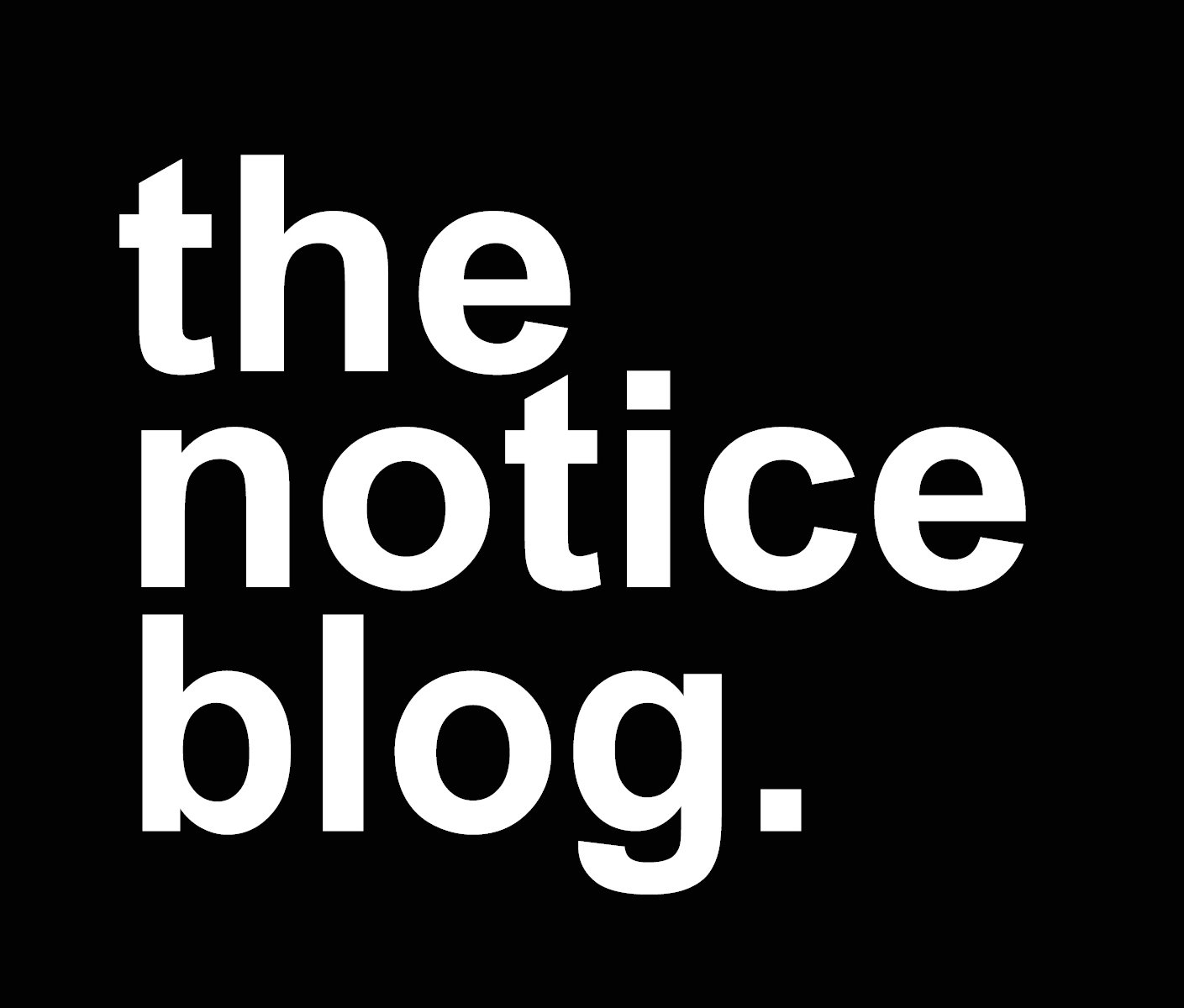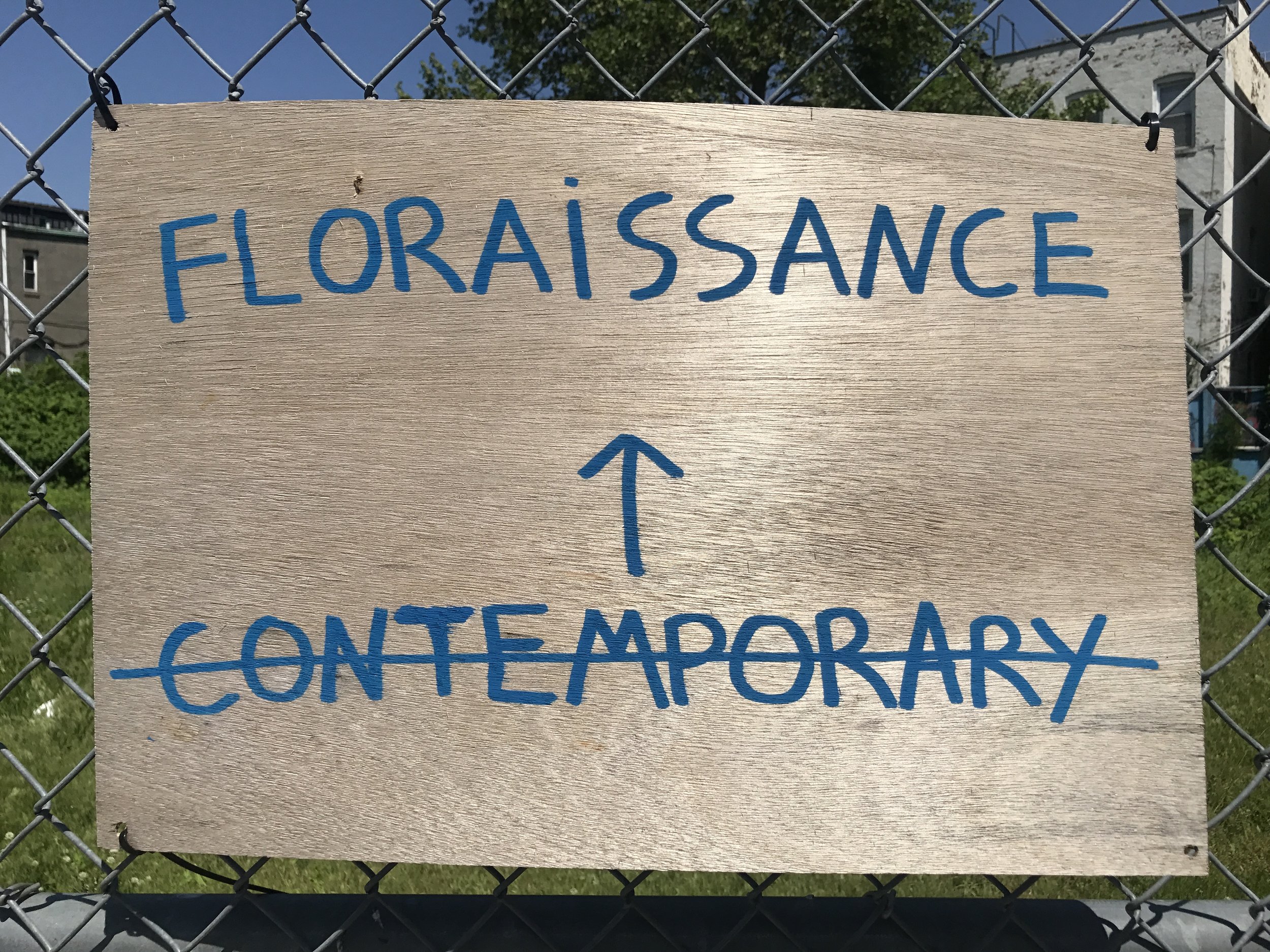Life and Art: What is Floraissance?
by Paul A. Notice II
LONG ISLAND CITY, NY - You'd miss it, if you weren't looking. Fastened to a chain-linked fence guarding wanderers from a vacant lot, overgrown with weeds and wild grass - someone posted a call to arms.
Simple. Cryptic. And yet, the message was direct and bold.
New York is breaking up with Contemporary Art. They're seeing Floraissance instead.
Contemporary Art & Us: "Who the f*ck is Floraissance?"
It's obvious that's the question these signs want us to ask. And in some way, it's successful. In other ways, the very term, "Contemporary Art" in a lot of ways carries a latent "Whiteness" to it. Though the reality is that everyone (POC, Women, LGBT, Differntly Abled, etc) engages in Contemporary Art.
It's extremely rare to find appreciation to non-white artists in that world. In fact, it's mention evokes a certain exclusivity. We understand at a viceral level who this sign is for, or at least forced in some ways to wonder if it's indeed a message to the public, or just the White liberal arts majors living in one of the wealthier parts of LIC. That's why I say it's direct - we get a sense of who these signs are talking to by the language and location used. And if that's the case, then the signs compel us to ask a different question:
"Why should I care? What about this name-change in observing Western Art is so important to me, or anyone?"
This reminds me of The Bell Curve a 1994 book, written by Richard J. Herrnstein and political scientist Charles Murray. Their book argues that human intelligence is substantially influenced by both inherited and environmental factors and is a better predictor of many personal dynamics, including financial income, job performance, birth out of wedlock, and involvement in crime than are an individual's parental socioeconomic status.
As if to drive home the point of their dog-whistle politics, Herrnstein and Murray also claimed that those with high intelligence, the "cognitive elite," are becoming separated from those of average and below-average intelligence - that these assumed differences gave reason to expect that quality art only came to the White and financially comfortable communities, with some small exceptions. This book, and its theory that the white and rich were more likely to be the most compentant and to produce better quality art and products - was a best seller in the 90's. It's a prime example of cultural racism.
And I think it's bullsh*t.
In fact, the complexity of reconciling both the external and internal conflict of life as the Other in society is what birthed some of the greatest expressions of art in American History. Whether or not we acknowledge the contributions of Contemporary Artists who may not even say the produce Contemporary Art themselves - let alone Floraissance Art - is a factor here.
Changing the name of another signifier of privilege, and expecting the public to uncover some greater truth from it - just doesn't do it for me.
Why not skip the kitchy reference to millennial breakup lines, and reach for something deeper?
I don't expect to see something inclusivity of the Other in White-dominant spaces in Contemporary, nor do I expect to see a message expressing a shift of framing to exploring resistance or oprression. I just expect a clear and evocative meaning that's worth the time I took to look for it.




